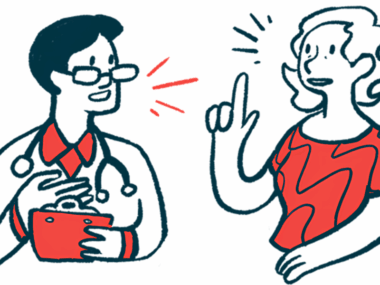FDA OKs Bioness’ Electrical-stimulation Rehabilitation Device for Gait Impairment
Written by |

The U.S. Food and Drug Administration (FDA) has authorized the use of Bioness’ L300 Go System electrical-stimulation rehabilitation device for multiple sclerosis (MS) patients and others with walking impairment.
It is the first electrical stimulation device to offer 3D motion detection of gait and muscle activation, the company says.
The L300 Go System is built upon Bioness’ NESS L300 Foot Drop System and NESS L300 Plus System. It helps children and adults with ankle dorsiflexion, or backward flexing of ankles. That is a problem for those with a condition called foot drop, or difficulty lifting the front part of the foot. The Go System also helps adults flex and extend knee muscles.
Electrical stimulation of leg muscles helps MS patients both with ankle and knee flexing, improving their walking movements.
Impaired gait gives people less control over their lower-extremity muscles, increasing the risk of a fall. Gait disorders, such as foot drop or knee instability, are frequently linked to upper motor neuron diseases such as MS, or to brain and spinal injuries.
A pioneering electrical stimulation delivery system is a key feature of the Go System. It uses data from a three-axis gyroscope and accelerometer to generate 3D motion detection of gait events and muscle activation.
The system monitors patient movement in three planes. Electrical stimulation is applied exactly when needed during the gait cycle. Changes in gait dynamics are detected within 10 milliseconds, thanks to an adaptive algorithm and a high-speed processor.
Multi-channel stimulation was included in the L300 Go System to increase control over the amount of dorsiflexion, inversion and eversion the system offers. Inversion and eversion refer to the position of the foot while standing or walking.
The Go System allows lateral and medial stimulation to be adjusted independently with a single electrode, saving time and making therapy sessions easier. Lateral stimulation occurs away from the center of the body, and medial stimulation toward the middle.
A new mobile iOS app, called myBioness, will allow home users to monitor their activity, establish personal goals and review their progress over time. The app was designed to engage users in the rehabilitation process and keep them motivated to meet their goals.
Sales of the L300 Go System will begin in the spring of this year. Initially, the system will be available only at medical facilities. Home availability is targeted for late 2017.
“The healthcare system is being challenged to objectively document and improve functional capabilities. To help meet these demands, clinicians are turning to technologies that speed up rehabilitation timelines and provide a personalized recovery plan,” Todd Cushman, president and chief executive officer of Bioness, said in a press release.
“Technological innovations including 3D motion detection and multi-channel stimulation work together to improve treatment efficiency and promote patient mobility. At Bioness, we are focused on improving the lives of patients through technology and are proud to add the L300 Go into our growing portfolio of products.” he said.
Current users of the L300 Foot Drop and L300 Plus Systems will be eligible for a Customer Loyalty Upgrade Program aimed at making the new system more accessible.





